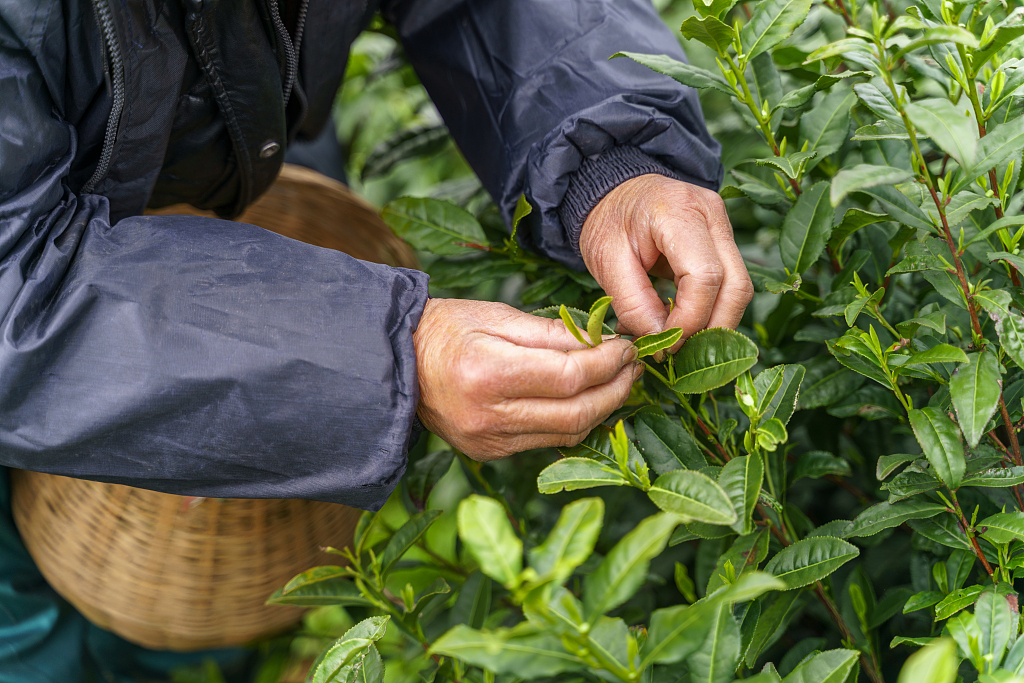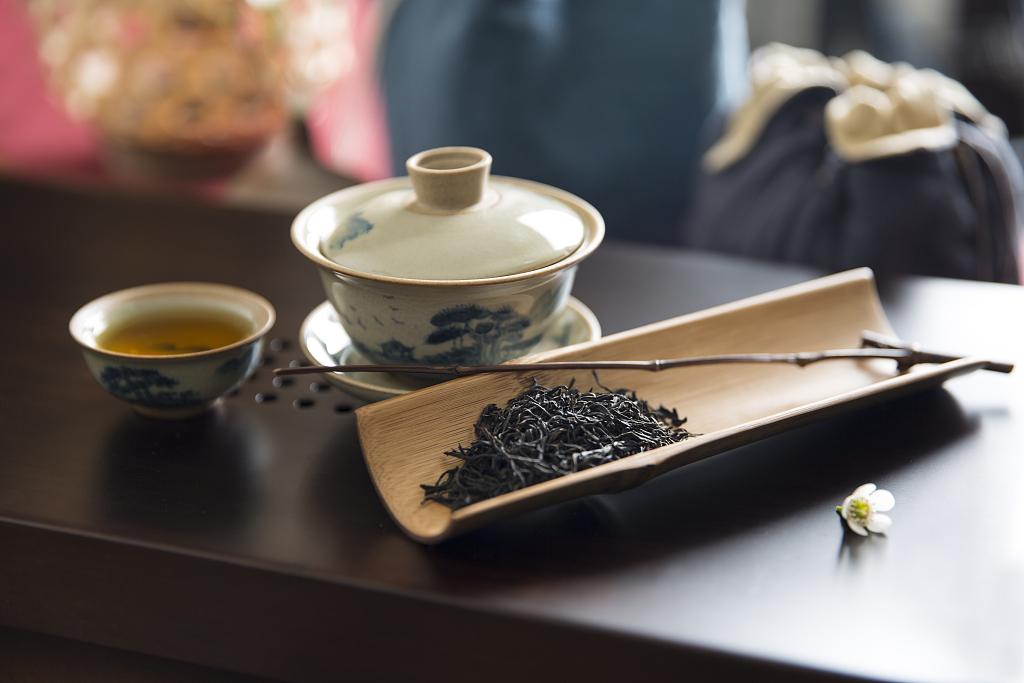In 1817, German biologist Johann Baptist Spix and his partner Carl von Martius were invited to Brazil to conduct research on local flora and fauna. They were particularly interested in the Chinese tea garden inside the Rio de Janeiro Botanical Garden, and their observations of it were described in their later publication, "Travels in Brazil, in the Years 1817-1820."
"The most important crop is the Chinese tea. So far, a total of 6,000 tea trees have been planted... The tea grown here is harvested and processed using the same methods as in China."
They also cited the presence of Chinese people in the tea garden, whom they believed to be "experienced tea growers from (the) Chinese mainland." In fact, Chinese tea has been a sought-after commodity among Brazilians for centuries.

A set of Chinese tea ware /CFP
A set of Chinese tea ware /CFP
As early as the Age of Discovery from the dawn of the 15th century, Portuguese sailors who were searching for spices had already discovered the benefits of Chinese tea. They established their own procurement channels and opened a tea trade route from China to Portugal via Macao.
After King João IV ascended the Portuguese throne in 1640, a committee was established to investigate the feasibility of growing tea in Brazil. However, it wasn't until the early 19th century that the Portuguese royal family put the plan into practice.
Around 1810, the first batch of tea seedlings arrived in Bahia, one of Brazil's 26 states, after which they were sent to the Rio de Janeiro Botanical Garden. According to research conducted by retired diplomats Chen Tairong and Liu Zhengqin, who had both worked in Brazil, the initial group of Chinese tea farmers arrived at the botanical garden in June 1809, with their ranks ultimately growing to around 200 farmers.

A farmer harvests tea leaves in Hangzhou, east China's Zhejiang Province. /CFP
A farmer harvests tea leaves in Hangzhou, east China's Zhejiang Province. /CFP
At the time when Spix and Martius observed the 6,000 tea trees at the botanical garden, Chinese tea farmers in Rio de Janeiro had achieved the peak of their cultivation methods.
Chinese farmers also grew tea at the Santa Cruz estate in the western suburbs of the same coastal city. Dating in 1814, official archives recorded many details about them, including their Chinese names, how they selected suitable areas in which to cultivate tea on the estate, their salaries, and even descriptions of how the Chinese celebrated their traditional Mid-Autumn Festival locally.
In 1825, the Brazilian Emperor Dom Pedro I decided the tea industry was worth promoting throughout Brazil as a business. As such, he ordered the head of the botanical garden, Friar Leandro, to send seedlings and tea seeds to provinces throughout the empire so they could be cultivated. He also requested that Friar Leandro write a booklet on tea cultivation to serve as a reference for tea farmers in other provinces.

These cultural exchanges and collaboration between China and Brazil contributed to the development of the tea industry, making Brazil only the third country in the world to produce tea, after China and Japan. The recognition of Brazilian tea at the Vienna World's Fair in 1873 is a testament to the quality of Brazilian tea and the impact of this cross-cultural exchange.
In recent years, Brazilians have begun to pay more attention to the health benefits of drinking tea. From 2013 to 2018, tea consumption in the country increased by 25%, or twice the global average growth rate. A survey in 2020 showed that searches for "tea" on Google exceeded those for "coffee" by 50%.
The contributions made by Chinese tea farmers over 200 years ago were recognized by later generations. On August 15, 2018, the Chinese Consulate-General in Rio de Janeiro held a ceremony to celebrate Brazil's first National Chinese Immigration Day and unveiled a commemorative plaque for Chinese tea trees at the Rio de Janeiro Botanical Garden.
Sergio Besserman, who served as the director of the botanical garden at the time, said: "The commemorative plaque for the tea tree is of great significance and is another historical witness to the friendship between Brazil and China."